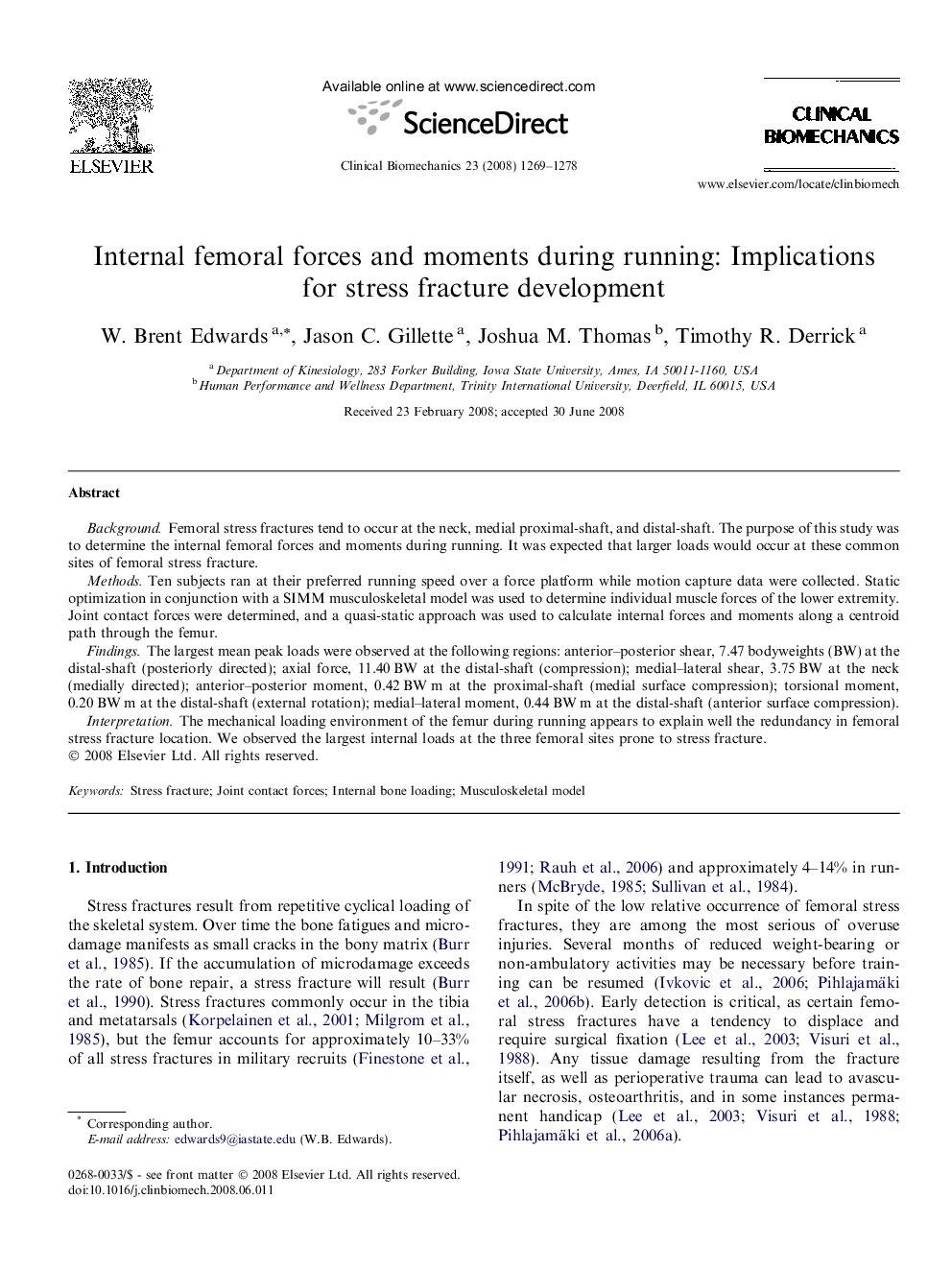| Article ID | Journal | Published Year | Pages | File Type |
|---|---|---|---|---|
| 4050965 | Clinical Biomechanics | 2008 | 10 Pages |
BackgroundFemoral stress fractures tend to occur at the neck, medial proximal-shaft, and distal-shaft. The purpose of this study was to determine the internal femoral forces and moments during running. It was expected that larger loads would occur at these common sites of femoral stress fracture.MethodsTen subjects ran at their preferred running speed over a force platform while motion capture data were collected. Static optimization in conjunction with a SIMM musculoskeletal model was used to determine individual muscle forces of the lower extremity. Joint contact forces were determined, and a quasi-static approach was used to calculate internal forces and moments along a centroid path through the femur.FindingsThe largest mean peak loads were observed at the following regions: anterior–posterior shear, 7.47 bodyweights (BW) at the distal-shaft (posteriorly directed); axial force, 11.40 BW at the distal-shaft (compression); medial–lateral shear, 3.75 BW at the neck (medially directed); anterior–posterior moment, 0.42 BW m at the proximal-shaft (medial surface compression); torsional moment, 0.20 BW m at the distal-shaft (external rotation); medial–lateral moment, 0.44 BW m at the distal-shaft (anterior surface compression).InterpretationThe mechanical loading environment of the femur during running appears to explain well the redundancy in femoral stress fracture location. We observed the largest internal loads at the three femoral sites prone to stress fracture.
